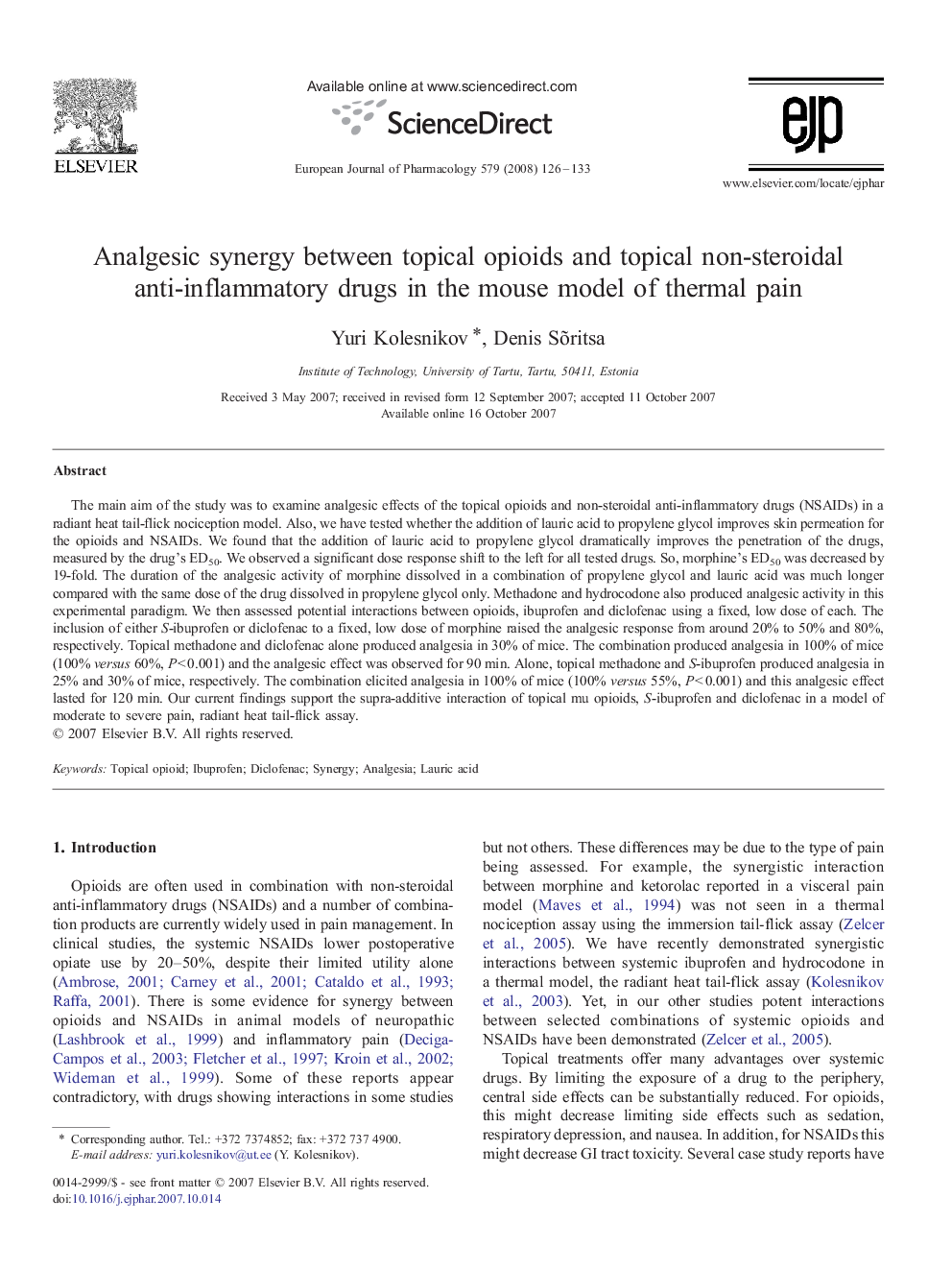| Article ID | Journal | Published Year | Pages | File Type |
|---|---|---|---|---|
| 2535543 | European Journal of Pharmacology | 2008 | 8 Pages |
The main aim of the study was to examine analgesic effects of the topical opioids and non-steroidal anti-inflammatory drugs (NSAIDs) in a radiant heat tail-flick nociception model. Also, we have tested whether the addition of lauric acid to propylene glycol improves skin permeation for the opioids and NSAIDs. We found that the addition of lauric acid to propylene glycol dramatically improves the penetration of the drugs, measured by the drug's ED50. We observed a significant dose response shift to the left for all tested drugs. So, morphine's ED50 was decreased by 19-fold. The duration of the analgesic activity of morphine dissolved in a combination of propylene glycol and lauric acid was much longer compared with the same dose of the drug dissolved in propylene glycol only. Methadone and hydrocodone also produced analgesic activity in this experimental paradigm. We then assessed potential interactions between opioids, ibuprofen and diclofenac using a fixed, low dose of each. The inclusion of either S-ibuprofen or diclofenac to a fixed, low dose of morphine raised the analgesic response from around 20% to 50% and 80%, respectively. Topical methadone and diclofenac alone produced analgesia in 30% of mice. The combination produced analgesia in 100% of mice (100% versus 60%, P < 0.001) and the analgesic effect was observed for 90 min. Alone, topical methadone and S-ibuprofen produced analgesia in 25% and 30% of mice, respectively. The combination elicited analgesia in 100% of mice (100% versus 55%, P < 0.001) and this analgesic effect lasted for 120 min. Our current findings support the supra-additive interaction of topical mu opioids, S-ibuprofen and diclofenac in a model of moderate to severe pain, radiant heat tail-flick assay.
